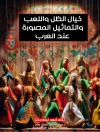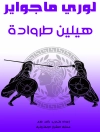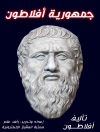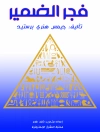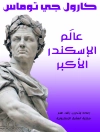This collection of essays in Archaeologies of Mobility and Movement draws inspiration from current archaeological interest in the movement of individuals, things, and ideas in the recent past. Movement is fundamentally concerned with the relationship(s) among time, object, person, and space. The volume argues that understanding movement in the past requires a shift away from traditional, fieldwork-based archaeological ontologies towards fluid, trajectory-based studies. Archaeology, by its very nature, locates objects frozen in space (literally in their three-dimensional matrices) at sites that are often stripped of people. An archaeology of movement must break away from this stasis and cut new pathways that trace the boundary-crossing contextuality inherent in object/person mobility.
Essays in this volume build on these new approaches, confronting issues of movement from a variety of perspectives. They are divided into four sections, based on how the act of moving is framed. The groups into which these chapters are placed are not meant to be unyielding or definitive. The first section, ‘Objects in Motion, ‘ includes case studies that follow the paths of material culture and its interactions with groups of people. The second section of this volume, ‘People in Motion, ‘ features chapters that explore the shifting material traces of human mobility. Chapters in the third section of this book, ‘Movement through Spaces, ‘ illustrate the effects that particular spaces have on the people and objects who pass through them. Finally, there is an afterward that cohesively addresses the issue of studying movement in the recent past. At the heart of Archaeologies of Mobility and Movement is a concern with the hybridity of people and things, affordances of objects and spaces, contemporary heritage issues, and the effects of movement onarchaeological subjects in the recent and contemporary past.
Mục lục
INTRODUCTION Mary C. Beaudry and Travis G. Parno Introduction: Archaeologies of Movement PART ONE: MOVEMENT OF OBJECTS Visa Immonen Intercontinental Flows of Desire: Brass Kettles in Lapland and in the Colony of New Sweden Scott Joseph Allen The Movement of People and Things in the Captania de Pernambuco: Challenges for Archaeological Interpretation Oscar Aldred Farmers, Sorting Folds, Earmarks and Sheep in Iceland Ronald Salzer Mobility Ahead of its Time – a 15th-century Austrian Pocket Sundial as a Trailblazing Instrument for Time Measurement on Travels PART TWO: MOVEMENT OF PEOPLE Chief-fu Jeff Cheng and Ellen Hseih The Archaeological Study of the Military Dependents Village of Taiwan Mats Burström Buried Memories: Wartime Caches and Family History in Estonia Craig Cipolla Resituating Homeland: Motion, Movement & Ethnogenesis at Brothertown Sean Winter The Global versus the Local: Modelling the British System of Convict Transportation after 1830 Karen Hutchins Movement and Liminality at the Margins: the Wandering Poor in Eighteenth-Century Massachusetts Magdalena Naum (University of Cambridge) The Malady of Emigrants: Homesickness and Longing in the Colony of New Sweden, 1638–1655 PART THREE: MOVEMENT THROUGH SPACES John F. Cherry Luke J. Pecoraro Krysta Ryzewski ‘A Kinda Sacred Place’: The Rock and Roll Ruins of Air Studios, Montserrat Travis Parno The Mosaic and the Interruption: An Approach to Material Aesthetics at Historic House Sites Christina Hodge Setting the Structure: Affordances of the Harvard Indian College Alexander Keim (Boston University) In the Street: Personal Adornment and Embodied Movement in the Urban Landscapes of Boston’s North End AFTERWORD Shannon Dawdy TBD
Giới thiệu về tác giả
Mary C. Beaudry is Professor of Archaeology, Anthropology, and Gastronomy and Chair of the Department of Archaeology at Boston University. She is author of Findings: The Material Culture of Needlework and Sewing (Yale, 2006), co-author of “Living on the Boott”: Historical Archaeology of the Boott Mills Boardinghouses in Lowell, Massachusetts (University of Massachusetts, 1996), editor of Documentary Archaeology in the New World (Cambridge, 1988), co-editor with Dan Hicks of The Cambridge Companion to Historical Archaeology (Cambridge, 2006) and of The Oxford Handbook of Material Culture Studies (Oxford, 2010), co-editor with Anne Yentsch of The Art and Mystery of Historical Archaeology (CRC, 1992), and co-editor with James Symonds of Interpreting the Early Modern World: Transatlantic Perspectives (Springer, 2010). She has published numerous journal articles and book chapters and served for 15 years as editor of the journal Northeast Historical Archaeology.
Travis G. Parno is a Ph D candidate in Boston University’s Department of Archaeology. He served on the CHAT conference committee and assisted in the planning and implementation of the conference. His dissertation looks to extend the temporal focus of household archaeology and explores intersections of place-making and heritage at the Fairbanks House in Dedham, MA. His previous publications include studies of archaeological photography (in Archaeologies: Journal of the World Archaeological Congress), three-dimensional digital modeling (in Society of Post-Medieval Archaeology), Catholic material culture at James Fort, VA (in Historical Archaeologies of Cognition), and contemporary graffiti in Bristol, UK (in Wild Signs: Inscribing Society).


